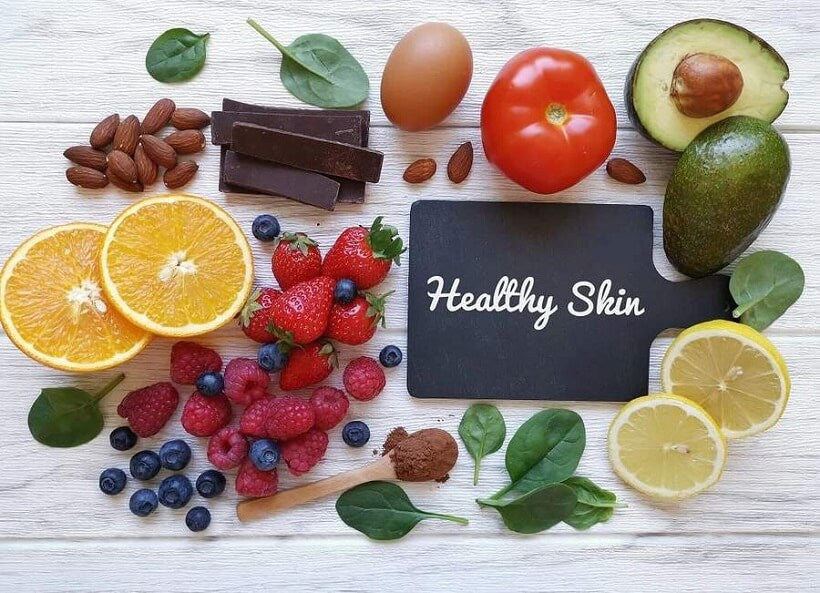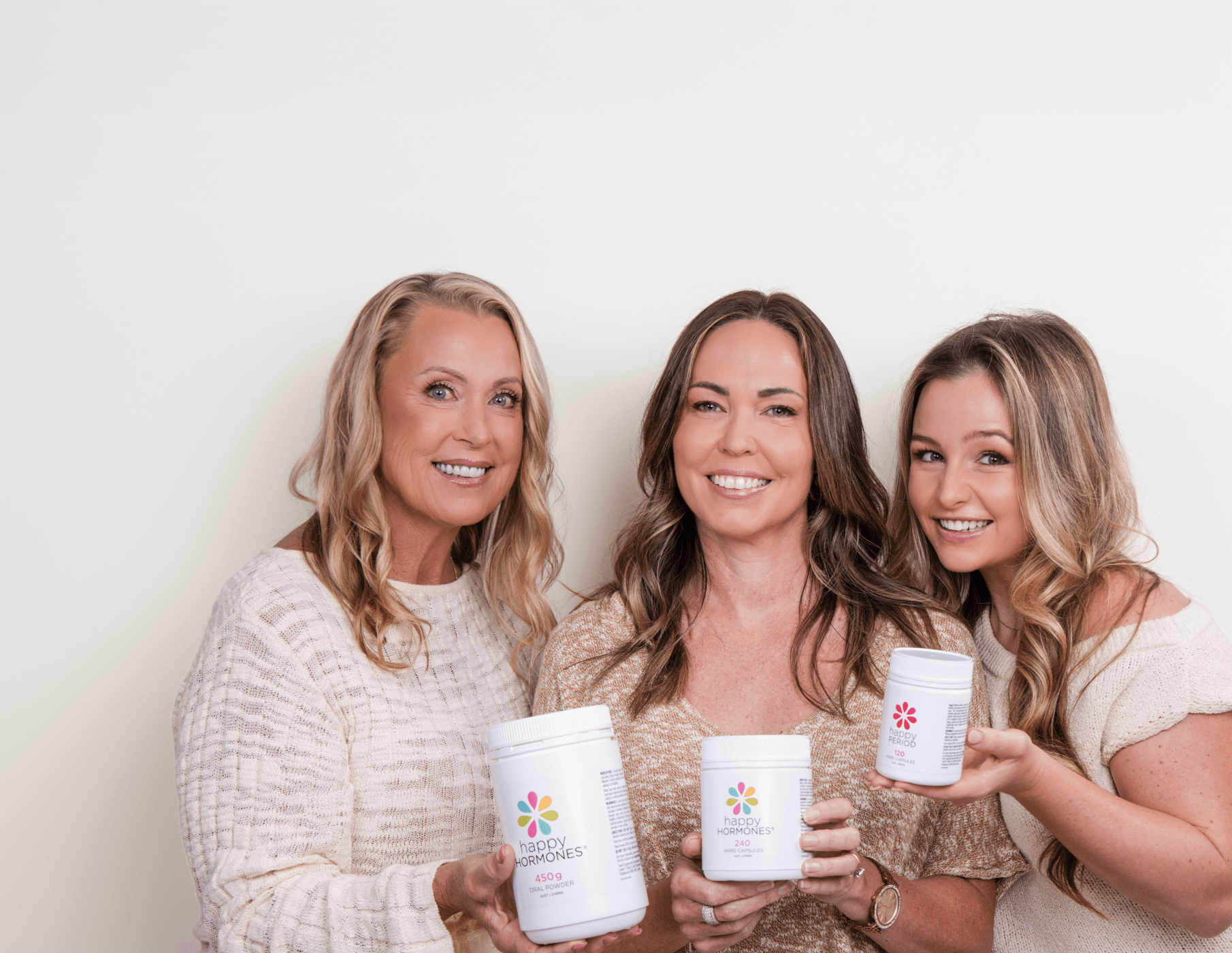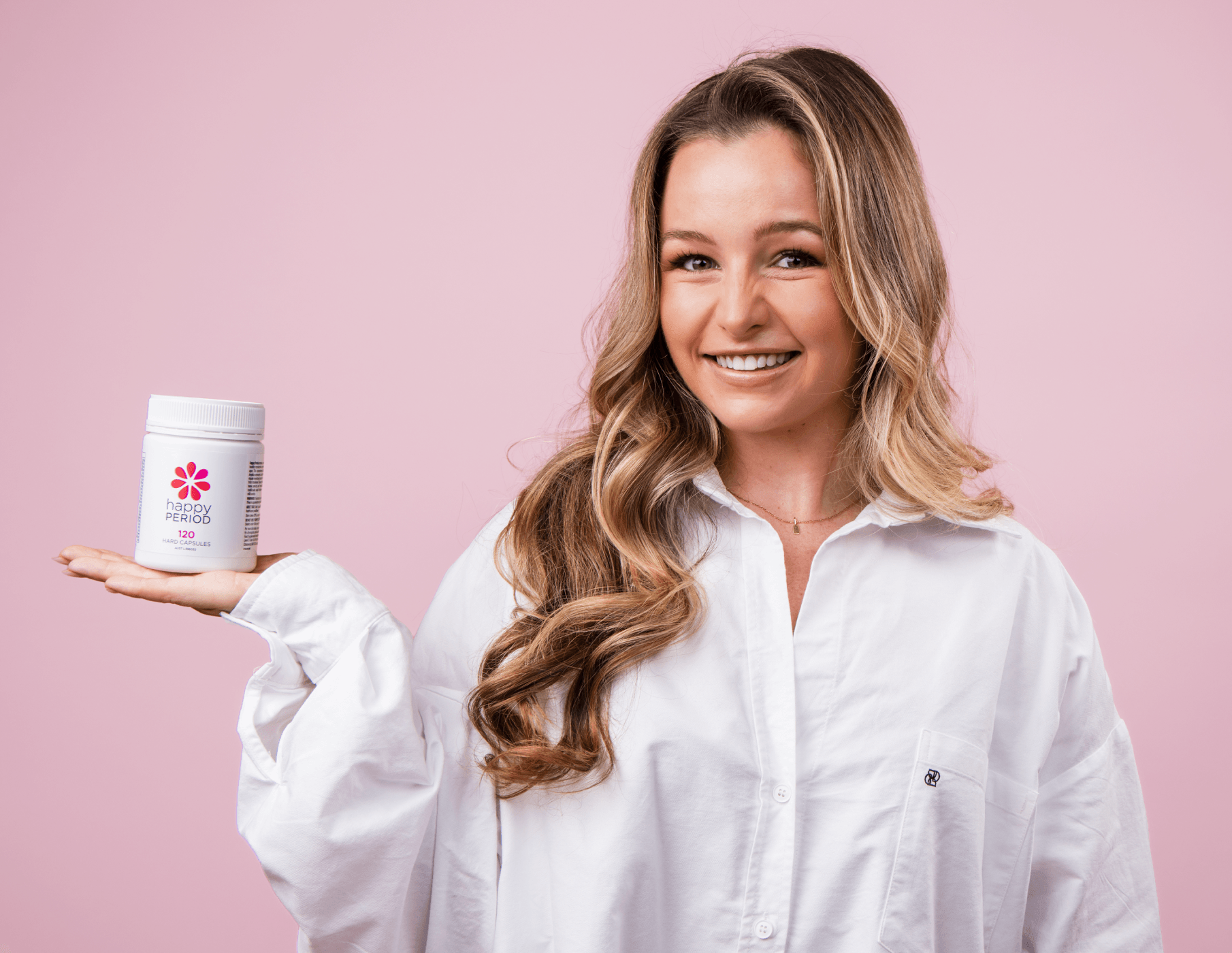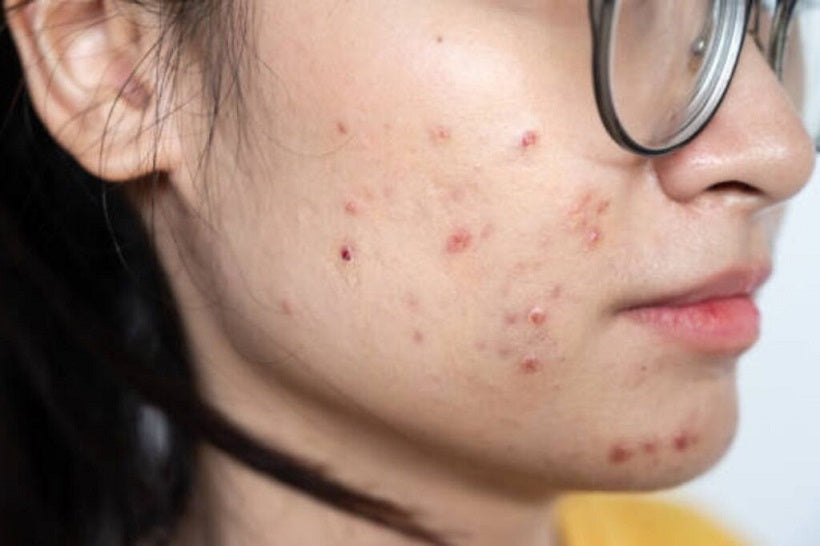Top 10 Skin Super Nutrients
By Renee Grandi

We’ve collated a list of the top 10 skin-loving SUPER NUTRIENTS to support your glow from the inside out. Increase these foods and nutrients abundantly and watch your skin transform.
1: Collagen
If you want young, healthy, supple skin, collagen is your new best friend! Collagen, by far, is a key nutrient to support your skin. Collagen proteins are the most abundant component of the extracellular skin matrix and are what make your skin smooth, strong, and firm. If you have dehydrated, damaged, or sensitive skin, collagen has been scientifically proven to enhance elasticity, density, and smooth texture.
Better yet, collagen works on nourishing the gastrointestinal tract and intestinal wall – perfect if you have food intolerances, deficient gut health or systemic inflammation.
Food Sources: Organic grass-fed bone broth, wild-caught fish bone broth, shellfish, organic eggs, crushed/powdered eggshells, collagen peptides.
2: Carotenoids
Carotenoids are plant-derived dietary antioxidants loaded with a plethora of skin protective activity. We want carotenoids in our diets on the daily!
Beta-carotene is a precursor to vitamin-A, a crucial nutrient for healthy skin, DNA, UV protection and wrinkle prevention. Think of vitamin A as the hero protector. It’s essential for healthy skin barrier functionality, protection, and cellular differentiation. An excellent way to achieve this is to add foods rich in beta-carotene to your daily diet.

Food Sources: Carrots, capsicum, turnip, pumpkin, sweet potato, oranges, mangoes, apricots, nectarines, peaches, persimmons, gooseberries, papaya, dark green leafy vegetables, turmeric, algae and super greens (spirulina, chlorella, kelp).
Lycopene
Lycopene is a skin-boosting carotenoid found in tomatoes! It’s also been found within the skin and acts synergistically with beta-carotene to protect the skin matrix. Lycopene specifically reduces reactive oxygen species (ROS), a huge contributor to poor skin health. Lycopene has likewise been shown to improve our potent antioxidant glutathione.
Food Sources: Red-coloured foods like red capsicum, tomatoes, radishes, grapefruit, mangoes, strawberries, raspberries, figs, watermelon, pomegranate.
Lutein and Zeaxanthin
These are 2 primary carotenoids and both are found in human skin. Supplementation of these carotenoids shows significant improvement in skin tone, colour, luminance and texture. Humans are unable to produce lutein and zeaxanthin; they must be sourced from food.
Food Sources: Organic free-range eggs, green leafy vegetables (kale, spinach, peas, beans, lettuce), salmon, red trout, orange/yellow peppers, carrots and rockmelon.
Astaxanthin
Astaxanthin is a powerful carotenoid with a red-orange pigment proven to have epidermal and dermal protective effects. Astaxanthin works directly with skin cells (keratinocytes) to prevent ageing, skin deterioration, inflammation and environmental damage.
Skin elasticity and hydration have shown incredible improvements with astaxanthin supplementation. This particular carotenoid also supports retinol conversions within the liver, enhances macular and brain health, nourishes neuronal fluidity, reduces gastric ulcerations and improves resistance to stress.
Food Sources: Microalgae organisms, crustaceans, trout, krill, red sea bream and salmon.
3: Vitamin E
Vitamin E is your go-to for skin suppleness. It’s recognised for highly effective antioxidant action within the skin cellular membranes. Have you ever heard of the term α-tocopherol? It’s part of an 8-nutrient family under the Vitamin E umbrella of which α-tocopherol is the most abundant and biologically active.
Vitamin E is heavily dependent on vitamin C, vitamin B3, selenium and glutathione; without sufficient supportive nutrients, Vitamin E cannot optimally work.
Food Sources: Oils (coconut, olive, sunflower and wheat germ), sunflower seeds, almonds, hazelnuts, green leafy vegetables.

4: Essential Fatty Acids (EFAs)
Omega-3 essential fatty acids form the skin barrier and are crucial to the cell membrane that protects us from our external environment. Linoleic acid (LA) has been shown to have the highest density within the skin epidermis and protect against inflammatory markers. EFAs are involved in skin membrane signaling, creating new skin cells and DNA transcription.
If you’re prone to eczema, psoriasis, and red/flushed or itchy skin, essential fatty acids will be in your favour.
Food Sources: Cod liver oil and other high-quality fish oils, linseed, walnut, flaxseed, evening primrose, and sustainably derived marine sources such as mackerel, herring, salmon, and sardines.
5: Selenium
Selenium is essential for our potent antioxidant and detoxifier glutathione. Inflammatory skin conditions, particularly acne and acute skin damage due to acne-weakened antioxidant defence systems, can be supported with selenium.
Selenium works on the microenvironment of the skin and is integral for collagen support and regenerative activity. It is a key cofactor for thyroid hormones and essential for skin membrane metabolism. Selenium is also involved in mood regulation.
Atopic dermatitis, psoriasis, and acne vulgaris may also be associated with depleted levels and utilisation of selenium. Healthy skin requires cellular differentiation, production, signalling and adhesion – selenium has been shown to improve all of these interactions within the skin matrix. Selenium must be sourced externally as humans cannot make their own selenium.
Food Sources: Wild-caught seafood, poultry, eggs, shellfish, brazil nuts, beans, peas, and lentils.
6: Zinc
Zinc is a crucial nutrient for overall health and our body relies on it for over 300 different enzymatic reactions! We need zinc for:
- DNA replication & gene regulation
- Many metabolic functions
- Hair & nail growth
- Hormonal functions and so much more!
Zinc can often be depleted with excessive copper levels; however, high zinc can also deplete copper – so having these balanced is vital to our health.
Zinc is high within the skin epidermis and the inability to absorb or utilise this nutrient within the intestines have been linked to dermatitis, acne, rosacea, folliculitis and premature ageing. The extracellular skin matrix relies heavily on zinc's presence as it’s required for nearly all structural protein development, such as collagen, elastin, gelatin, and various antioxidant activities.
Food Sources: Pepitas, wild-caught seafood, shellfish, red meat, eggs.
7: Vitamin C
Do you have hyperpigmentation? Age spots? Inflammation? Premature ageing? Poor wound-healing?

Vitamin C (ascorbic acid) has shown impressive anti-pigment, anti-ageing, antioxidant and photo-protective properties. Vitamin C works synergistically with Vitamin E to stabilize and protect collagen degradation, providing essential skin tissue management and rejuvenation. You’ll find ascorbic acid in the intracellular compartments of the dermis, keeping oxidative stressors at bay.
Vitamin C also interacts with copper ions – it’s a key nutrient to support melasma as it reduces tyrosine to melanin excessive conversion/accumulation.
Food Sources: Dragon fruit, blackberries, blueberries, Brussel sprouts, kohlrabi, dark green leafy vegetables.
8: Biotin (Vitamin B7)
Biotin has been shown to improve:
- Xerosis (dry skin)
- Pruritus (itchy skin)
- Hair follicle strength and quality
- Nail firmness and thickness
Biotin works as an essential cofactor for converting and utilising your carbs, fats and proteins (particularly your amino acids). Biotin deficiency can occur with gastrointestinal inflammation, antibiotic use, anti-epileptics, isotretinoin, prolonged vitamin B5 supplementation, high alcohol intakes and smoking.
Biotin requires healthy intestines and microflora to convert and utilise Vitamin B7. The highest source of nutritional biotin has been synthesized by intestinal bacteria.
This little gem of a nutrient can do wonders for hair, skin and nail health via its anti-inflammatory and immune balancing activity.
Food Sources: Egg yolks, organic liver, salmon, sardines, organic milk, nuts, grains, spinach, mushrooms, algae and cauliflower.
9: Probiotics
Probiotics, prebiotics and gut-health are a major component of healthy skin. This is mediated through skin immunity, protecting against imbalanced skin bacteria, inflammation and a healthy gut. Research continuously proves that balanced gut flora is essential to skin health – now termed ‘the gut-skin axis’ – and is paving the way for new foundations in skincare.

Fermented foods have been used for thousands of years, displaying significant healing for gastrointestinal inflammation, imbalances and diseases.
Probiotics are crucial for supporting:
- Intestinal permeability (leaky gut)
- Food intolerances
- Recurring infections
- Acne, dermatitis and allergic contact dermatitis
- Wound healing
Microbial threats can cause a crisis to the skin microbiome (bacterium) causing significant:
- Skin redness & inflammation
- Acne/rosacea
- Infection & itching
- Scaling
- Dehydration
- Premature ageing
The skin cells require healthy bacteria ratios for keratinocyte (skin cell) production, DNA production/repair/monitoring and barrier function. There’s a lot that goes on behind the scenes to make healthy skin! New research has been showing promising results in relation to topical probiotic applications and skin microflora – is this our saving grace!?
Key skin healing probiotics:
- Oxy 229 Microbiome
- L. acidophilus, B. bifidum and B. lactis
- L. plantarum; HY7714
- L. reuteri
- L. rhamnosus
- L. lactis, S. thermophilu
*If you have a histamine intolerance (excessive hay fever, rashes, hives), you must be careful of probiotics as some can increase histamine. Be sure to select a histamine-balancing probiotic blend containing strains L. rhamnosus, L. plantarum, and Bifidobacteria. Histamine-producing strains include L. reuteri, L. casei, and L. bulgaricus.
Fermented Food Sources: Kimchi, sauerkraut, tempeh, coconut kefir, coconut yoghurt, fermented teas, natto, and miso.
10: Silica
Silica is a key nutrient for wound-healing and collagen structural support, acting almost like a scaffold. Collagen and silica bond together to strengthen the skin matrix, reducing destabilisation of the extracellular matrix. An excellent anti-inflammatory and anti-microbial, silica works with other antioxidant compounds to improve collagen stimulation. It is ideal for both acute and chronic skin inflammation and healing.
Food sources: Green beans, cucumber, celery, onion, parsnips, nettle leaves, cabbage, radish, dandelion greens, horsetail, green leafy vegetables, brown rice, lentils and bananas.
Time to get your glow on!
So there you have it – your list of the top 10 skin super nutrients.
Check out our Happy Skin by Lisa Curry™ Optimal Skin Guide for nutritionist-approved skin-nourishing recipes containing all of the listed nutrients and foods above.
REFERENCES
Bolke et al. (2019). A Collagen Supplement Improves Skin Hydration, Elasticity, Roughness, and Density: Results of a Randomized, Placebo-Controlled, Blind Study. Nutrients, Oct; 11(10): 2494.
Evans et al. (2020). A randomized, triple-blind, placebo-controlled, parallel study to evaluate the efficacy of a freshwater marine collagen on skin wrinkles and elasticity. Journal of Cosmetic Dermatology, Mar; 20(3): 825–834.
Perumal et al. (2018). Collagen-silica bio-composite enriched with Cynodon dactylon extract for tissue repair and regeneration. Materials Science and Engineering, Nov 1;92:297-306.
Abdel-Aal et al. (2013). Dietary Sources of Lutein and Zeaxanthin Carotenoids and Their Role in Eye Health. Nutrients, Apr; 5(4): 1169–1185.
Wiese et al. (2019). Prebiotic Effect of Lycopene and Dark Chocolate on Gut Microbiome with Systemic Changes in Liver Metabolism, Skeletal Muscles and Skin in Moderately Obese Persons. BioMed Research International. Jun 2;2019:4625279.
Capelli, B. T. (2019). Astaxanthin sources: Suitability for human health and nutrition. Functional Foods in Health and Disease. 9(6):430-445.
Tominaga, K., Hongo, N., Fujishita, M., Takahashi, Y., & Adachi, Y. (. (2017). Protective effects of astaxanthin on skin deterioration. Journal of Clinical Biochemistry and Nutrition, Jul;61(1):33-39.
Poljšak, B. & Dahmane, R. (2012). Free Radicals and Extrinsic Skin Aging. Dermatology Research and Practice. 2012:135206.
Petruk et al. (2018). Antioxidants from Plants Protect against Skin Photoaging. Oxidative Medicine and Cellular Longevity, Aug 2;2018:1454936.
Kandola et al. (2015). Oxidative stress - a key emerging impact factor in health, ageing, lifestyle and aesthetics. International Journal of Cosmetic Science, 1–8.
Dattola et al. (2020). Role of Vitamins in Skin Health: a Systematic Review. Current Nutrition Reports. Sep;9(3):226-235.
Boelsma et al. (2001). Nutritional skin care: health effects of micronutrients and fatty acids. The American Journal of Clinical Nutrition, May;73(5):853-64.
Souyoul et al. (2018). Nutraceuticals: A Review. Dermatology and Therapy, Mar;8(1):5-16.
Berra, B. & Rizzo, AM. (2009). Zinc, Selenium and Skin Health: Overview of Their Biochemical and Physiological Functions. Nutritional Cosmetics, 139–158.
lv J, A. P. (2020). Selenium levels and skin diseases: systematic review and meta-analysis. Trace Elements in Medicine and Biology. Vol 62:126548.
Jobeili et al. (2017). Selenium preserves keratinocyte stemness and delays senescence by maintaining epidermal adhesion. Aging (Albany NY).
Nov 25;9(11):2302-2315.
Bangash, H. K. (2012). Zinc and skin health: an overview. Human Health Handbooks - 1, 178–195.
Ravetti et al. (2019). Ascorbic Acid in Skin Health. Journal of Cosmetics, 6(4), 58.
Lipner, S. R. (2018). Rethinking biotin therapy for hair, nail, and skin disorders. Journal of the American Academy of Dermatology, Jun;78(6):1236-1238.
Saleem, F., & Soos, M. (2020). Biotin Deficiency. StatPearls Publishing.
Lolou, V. &. (2019). Functional Role of Probiotics and Prebiotics on Skin Health and Disease. Fermentation, 5(2), 41.







Leave a comment
This site is protected by hCaptcha and the hCaptcha Privacy Policy and Terms of Service apply.